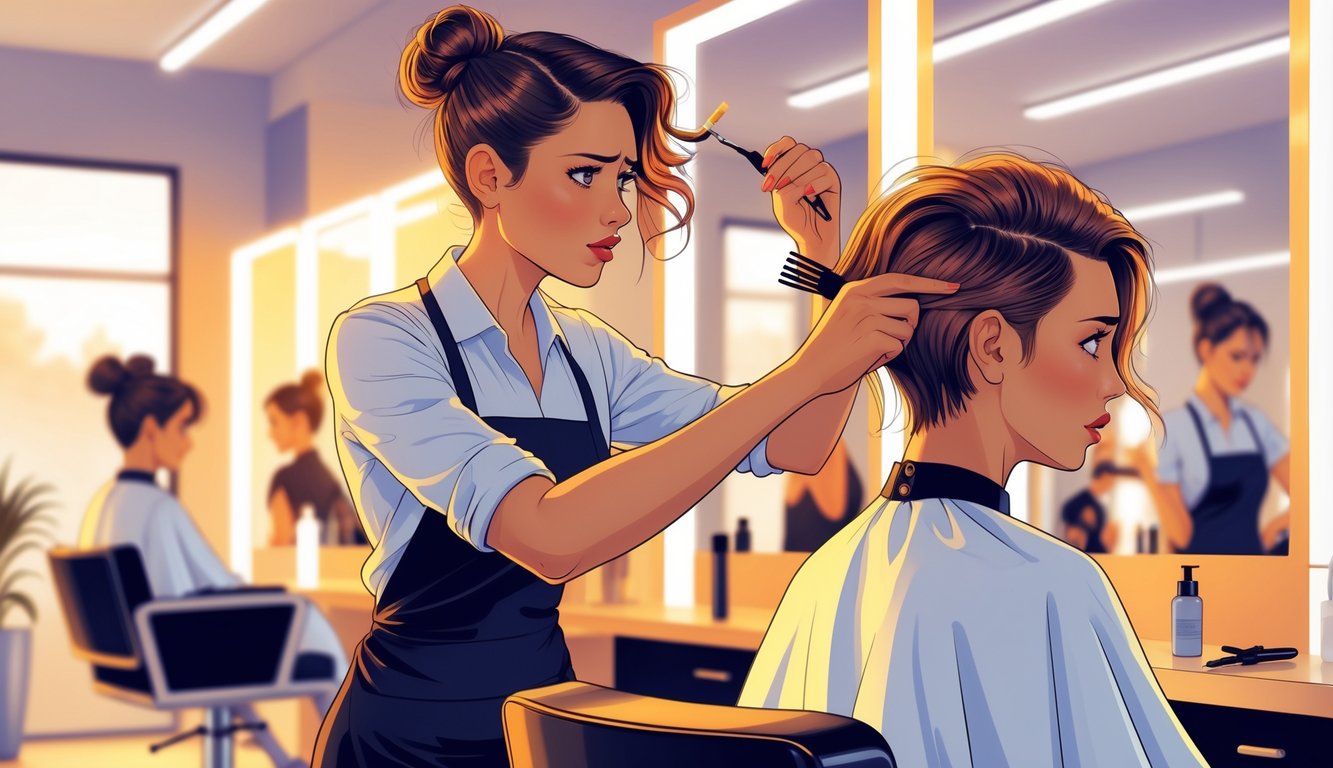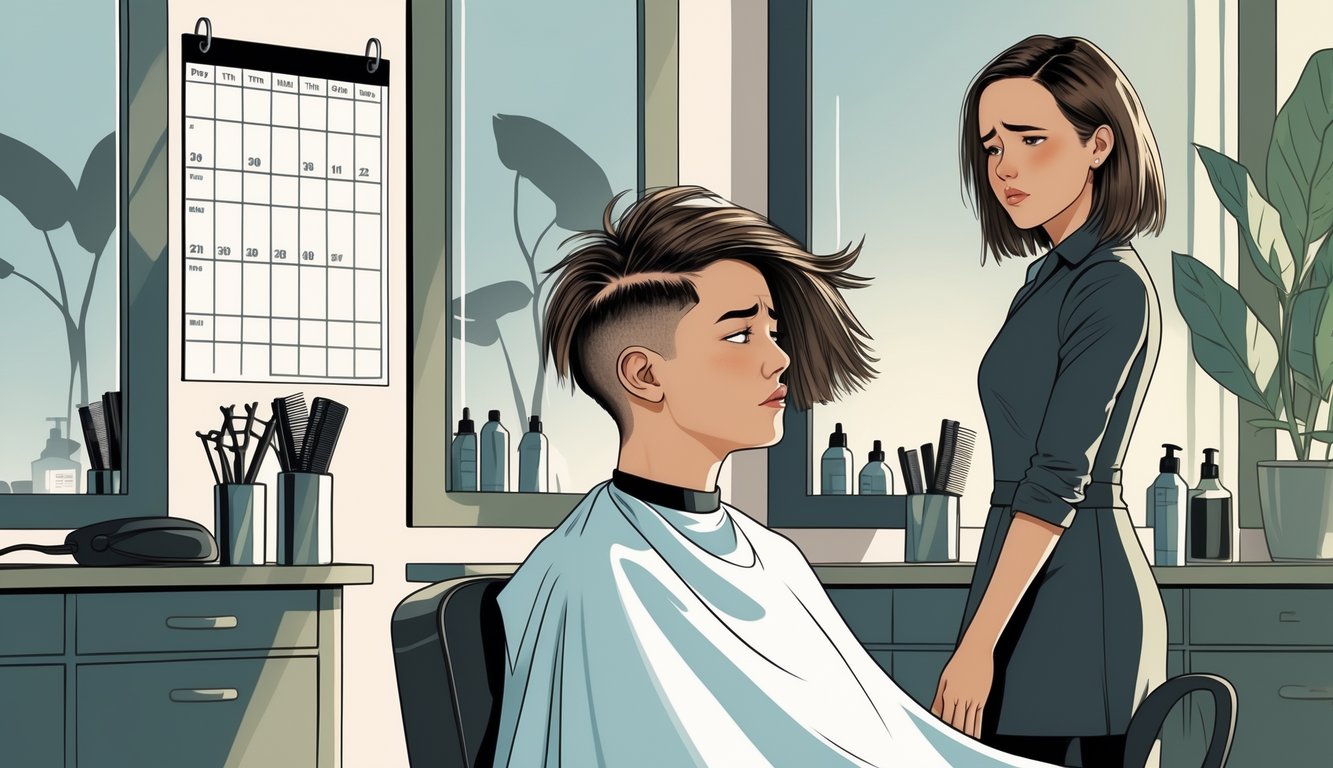
Long-Term Effects of an Unwanted Haircut

Optimism? Gone. All that’s left is me, staring at the mirror, wondering why I ever said yes to “shorter is chic.” Unwanted haircuts stick around like bad apps you can’t uninstall. It’s not just about how I look—suddenly my whole morning routine is chaos, my confidence tanks, and I’m dodging every group photo.
Damage to Self-Confidence
Stylists who claim hair isn’t tied to identity are just lying to themselves. One bad cut and I’m hiding under hats, canceling plans, and photos? Forget it. There’s this survey from 2019—over 70% say a bad cut wrecked their confidence. Not shocking.
A colorist once told me I was “made” for short hair. Spoiler: I wasn’t. Two weeks of hat life, ditched my LinkedIn pic, skipped every camera at a wedding. Stylists see it—people literally shrink into themselves after a bad cut. No science needed. And anyone who says “it’s just hair” hasn’t been side-eyed by relatives at brunch.
Impact on Daily Styling Routine
Here’s the real nightmare: the time sink. Every morning, I try new products, new tools, nothing works. Too short? Now I’m a slave to the flat iron, and my leave-in conditioner is useless. Bobby pins everywhere. I once counted 32 in my hair just to avoid looking like a cartoon villain.
Stylists say give it three weeks. Three weeks? I’m lucky if I make it to haircut #2 without losing my mind. I’ve watched every “fix your bangs” video on YouTube. My bathroom is full of abandoned products. Headscarves? I tried. Not me. At least my dog doesn’t judge.
Stylist Strategies for Handling Disappointment
There’s always that moment—cape off, hands in hair, eyes darting. Some people go silent, others overcompensate. That first reaction? It’s everything. Makes me sweat, honestly. That’s when the real work starts.
Offering Quick Fixes or Adjustments
Sometimes, the fastest fix is just a tiny trim. I keep my shears close because, wow, people panic over half a centimeter. “Can you fix this bit?”—I hear it constantly. Bangs too short? I try to blend, soften the edges, anything to distract from whatever went wrong. Shear-over-comb, texturizing, maybe a little root spray if things got too thin. I’ve seen people slap a hat on before leaving—indoors, in July. No shame, I get it.
If you’re a stylist who cares, you act fast. MidAmericaBeauty says fixing your own mistakes is what keeps people coming back. Sometimes it’s just a dab of pomade, a quick blow-dry, or faking volume with mousse. I’ve even used colored spray to hide a botched spot. Not proud, but hey, it works.
Providing Honest and Gentle Feedback
Look, I’m not here to hand out gold stars. If your hair looks nothing like the reference photo, I’ll say it. (Honestly, I wish I could be as gentle with myself as I am with clients—standing in my own bathroom, scissors in hand, spiraling.) I try to break down the why—density, cowlicks, face shape, whatever’s going on—instead of tossing out a “meh, it’s fine.” Sometimes what you want just isn’t happening in one session, or your curls don’t want to play nice with a sharp bob. I’ve got to lay out the trade-offs. Richard Mannah, who knows his stuff, says it’s all about asking the right questions: “Describe your hair, ask if they’ve worked with it before, get specific.” Makes sense.
But man, walking the line between honesty and not crushing someone’s spirit? That’s the real challenge. Sometimes I’ll say, “This’ll look better with another week’s growth,” or “Honestly, this cut flatters rounder faces more, that’s why it’s not falling right.” I’ve told people to grow out their bangs or go shorter in the back, because, yeah, fixing a mistake is way harder than avoiding it. People appreciate facts if you’re not a jerk about it, but nobody wants to hear “It’s just hair, it’ll grow.” Give them something concrete. Real advice, actual product names, maybe a follow-up appointment. I once told a teenager her wolf cut needed two months to chill out, minimum, and she actually thanked me for not sugarcoating. Weird, right? But it’s true—if you’re honest but not mean, people trust you way faster.



